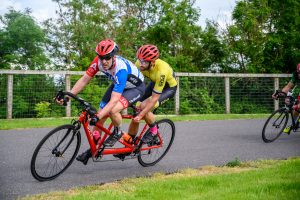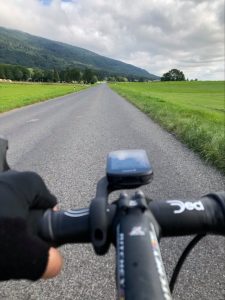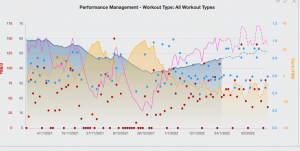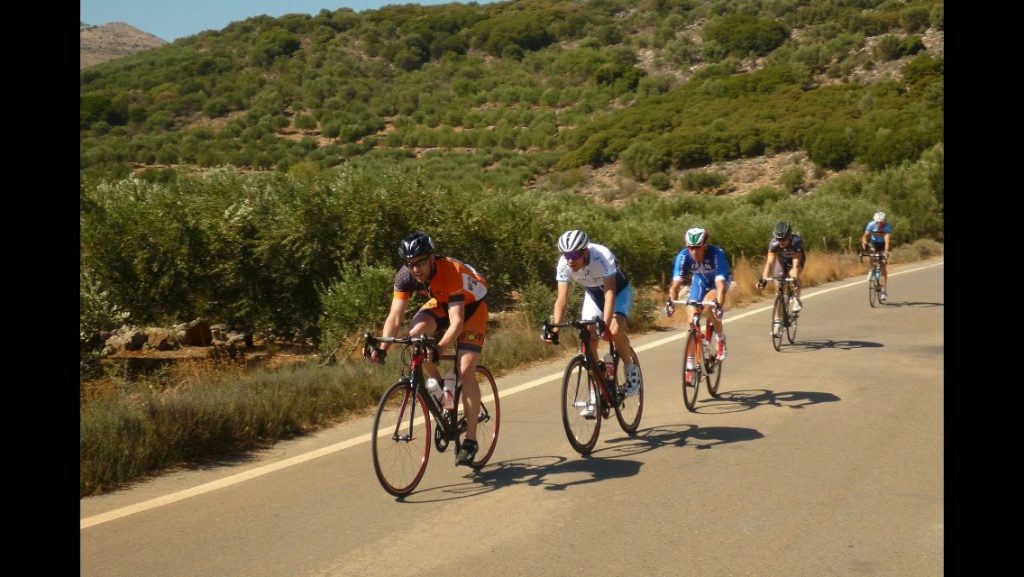It’s all about the Base
But what is so important about building a good base?
What are the Advantages of a Good Base?
There are a few fundamental truths in endurance training that are very hard to argue with. One of those is the requirement for good ‘base training’.
What is ‘Base Training’?
Base training has been defined in many different ways, but I take it to mean the underlying fitness you have built up through consistent training over many weeks, months, years and beyond.
I think it is something that can easily be underestimated. It’s not seen as the sexy side of training. You don’t often see it mentioned on the front of magazines or headlines of articles…more likely to see ‘6-Weeks to increase your FTP’ and normally with high-intensity exercise.
Base fitness comes from the lower intensity, higher volume training. And crucially, avoiding too much higher intensity training that increases autonomic stress. The advantages of keeping your intensity distribution under control are the improvements in cardiovascular and metabolic fitness.
It’s not a short-term project, the adaptation doesn’t come particularly quickly, but it’s well worth it!! Here are the main advantages.
What are the Advantages of Base?
Though not an exhaustive list…here are the key advantages of having a good base fitness:
- Allows increased volume of training
- Higher rates of fat oxidation
- Increased tolerance of high-intensity exercise
- Better recovery
- Increased quality of high-intensity sessions
- Allows year-on-year progression.
Allows Increased Volume
Increasing volume is one way to increase endurance performance. But it’s not the volume you can do (a big mistake many make); it’s the volume you can absorb. Gradually building, maintaining and protecting your base fitness means that you can gradually increase the volume you can absorb. This gives you a massive advantage if training is consistent year on year.
There are no shortcuts!
Increased Fat Oxidation
This is part of the metabolic adaptation I mentioned earlier. By working in the lower zones you will develop the efficiency of the type I muscle fibres and develop the aerobic capacity of type IIa fibres. All combining to burn more fat, and over time, your ability to burn fat will improve.
This has a few advantages. Sparing glycogen during the workout you are in and meaning less glycogen will need replacing before the next workout. This is one way that increased volume can be achieved over years of training.
Increased Tolerance to High-Intensity Exercise
This links to the above. Metabolic efficiency and having your autonomic stress under control means that when you do open the taps, you are better able to deal with it. Joe Friel is a big proponent of 5-2 training. Meaning 5 easy sessions a week and 2 hard. There are plenty of studies to back it up, as 2 hard sessions a week seems to improve fitness a little more than 1 and 3 hard sessions doesn’t gain much over 2, but has some negative consequences that make it hard to maintain over the long term.
The amount of high intensity each week will vary depending on the time of year. But if you nurture a strong base, over time you will be better able to tolerate the sessions where you do put the hammer down.

Better Recovery
We already talked about this a bit. The metabolic efficiency and muscular efficiency you develop over time means that your recovery between sessions will be better.
Part of this is the impact of the session will be less on your body, and part will be that you are less glycogen depleted, so you will be ready to go for your next session in less time. This also means that at times of high training load, you are digging less of a hole, so more likely to absorb the good work you are doing.
Increased Quality of High-Intensity Sessions
If you have built a good base and are keeping your intensity distribution in good order. You will be more recovered between sessions. This means when it comes time to do the high-intensity work, it will be of sufficient quality to be developmental.
If you train too hard too often or train too hard with an insufficient base, your session quality will quite quickly decline and a plateau is almost inevitable.
Allows Year on Year Progression
This is the one most commonly missed, I think. There are a lot of ways to mess up your training…we’ve all done some of them. But missing the year-on-year progression is massive. The most common ways to really mess this up are by:
- Stopping the base phase too early in favour of quickly building to a ‘peak’ of fitness.
- Peaking too many times in a year.
- Long breaks in training
The first two of these are very much in your control and the third may or may not be controllable. It’s fairly normal for endurance athletes to fluctuate their training over time, but that hopefully doesn’t include prolonged periods off the bike.
There are some very legitimate reasons for having long periods off the bike, so don’t think I’m saying train at all costs! If illness, injury, family, work or any other legitimate reason stop you, all you can do is wait until the time is right and start building the base again.

What NOT to do!!
- Don’t think because you only have a few hours, ‘every training session has to be really hard!’
This is the biggest mistake people with limited time make. The simple truth is no one can train like this sustainably. You simply cannot recover fast enough with this approach so you end up digging a big hole for yourself. You either end up overtraining and burning out, plateauing and not reaching your potential or getting illnesses all the time.
You need a mix of different intensities and a training plan that is balanced enough to allow you to sustain it for a long period of time. This is where the big gains are.
- Don’t think just because you only have 30-60 minutes it won’t do anything!
This overlaps with my previous point. Just because you only have 40 minutes to fit in a ride on the turbo it’s not pointless and you don’t have to go flat out to achieve something!!
There’s great benefit in just getting on and riding, if it’s supposed to be an easy day, keep it easy. Save your hard efforts for the hard days.
Even short, easy rides have a good impact on your fitness…DO NOT underestimate them!! It’s a nice stimulus that will create adaptation and as part of a balanced programme have a massive benefit.
Missing these rides because you think they won’t do anything is a huge mistake, as is making them too hard.
- Don’t Believe in the ‘Magic Intervals’
Magazine and internet articles will tell you their intervals will ‘Boost your fitness instantly’ or be a ‘shortcut to massive fitness gains’!! Never believe them!! They may quote scientific articles, but in truth, they are commonly done on untrained students who will respond to just about any training.
Summary
I’m sure there are many other compelling reasons to build a good base fitness.
However, the elements we’ve covered here are pretty compelling!! If you want to achieve your potential in endurance sports you need to commit to the long term.
If you have any questions at all, feel free to get in touch 🙂





